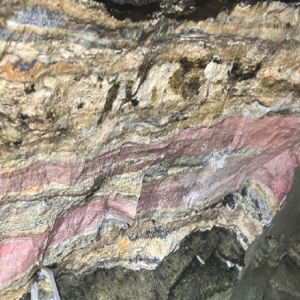By Rob Natelson
Preliminary note: Public discussion within Montana about the merits of that state’s 1972 constitution is dominated almost entirely by those who benefit from its terms. Many of their depictions of the constitution are imprecise or sanitized. Neither the local media nor public programs typically offer dissenting views.
When Montana state lawmakers recently suggested some amendments, a former governor likened their suggestions to an attack on democracy and representative government. A former state supreme court justice came near to threatening violence.
Rob Natelson served as a professor of law at the University of Montana (1987-2010), where he published scholarly and popular articles on the state constitution and created the first web collection of ratification-era documents. In 2018, after a lengthy investigation, he wrote the only peer-reviewed article ever published on the 1972 adoption process.
(In 2020, Justice Samuel Alito formally relied on some of Natelson’s state constitutional research in Espinoza v. Montana Dep’t of Revenue, 591 U.S. ___ (2020)).
****
For some time now I’ve watched the popular efforts of Montanans to improve their state constitution, and the anguished opposition by figures in Montana’s former political establishment. The response amounts to a sanctimonious “How dare they?”
One example: Former Governor Marc Racicot’s Feb. 1 capitol speech, in which he equated reform efforts with attacks on democracy, republicanism, and the separation of powers.
Let’s get real: It is always the prerogative of the people to fix flaws in their government. And the Montana constitution, like any human creation, has its flaws.
As a law professor at the University of Montana (1987-2010) and as chairman of Montanans for Better Government (1993-1997), I became intimately familiar with those flaws.
Moreover, in 2017-18, I extensively researched the constitution’s adoption, reviewing old newspaper articles, letters, flyers, transcripts, court cases, and other documents. I also conducted personal interviews, including with on-the-scene reporters, one of whom was the late Chuck Johnson. My findings were peer-reviewed and published in the British Journal of American Legal Studies.
From that experience and research, I learned some facts every Montanan should know:
Montana’s original constitution, adopted in 1889, contained important safeguards against cronyism and excessive taxes, spending, and debt. Those safeguards were the product of hard lessons from the entire country.
In the 1960s, liberal special interest groups—such as the National Municipal League—began a national campaign to create new state constitutions that removed restrictions on government. Montana was one of their targets. (Among the others were Illinois, where they were successful, and Texas, where they were not.)
Montana liberal activists joined this campaign. One of their goals was to give government more power to tax, spend, and borrow. Another was to reduce the number of elected offices and increase the number of appointed ones. Still another was to give local governments more power to tax and regulate. There was no secret about any of this.
Although many fine people participated in the 1972 convention, the process was manipulated to achieve some pre-determined results. For example:
* A National Municipal League lobbyist was given extraordinary access to the delegates. Much of the information provided to the delegates came from League sources.
* Other background information and sample constitutions provided to the delegates was selected to promote the preferred conclusions.
* Outside speakers were invited. All were left of center and preached much the same message.
* The famous decision to sit delegates alphabetically impeded the ability of the conservative or skeptical minority to confer with each other.
The overall bias was blatant enough to elicit comment at the time from some newspaper reporters.
Most of the delegates were not equipped to deal with this. None had any real experience in constitution-writing. Few knew that the information they were receiving was unreliable or biased. Sitting lawmakers—who might have been more practical or skeptical—were barred from serving as delegates.
After the convention came the voter referendum. This was carefully structured —in timing, ballot form, etc.—to skew the vote toward approval. Taxpayer money was used to promote ratification. For example, Montana State University used public funds to publish a biased newspaper supplement distributed to tens of thousands of households.
What of the vote itself? In his capitol speech, Mr. Racicot claimed the voters approved the constitution.
But that is doubtful.
My research found that under the approval rules then in effect, the constitution probably failed. Prior to the election, the voters uniformly were told (accurately) that under existing rules, if they cast ballots on other issues but abstained from the constitutional question, their abstention would be counted as a “no.” And, in fact, the number of “nos” and “abstentions” easily outnumbered the “yeses.”
What happened next was astonishing: In defiance of the rules—and over the objection of the Democratic secretary of state—the Democratic governor purported to “certify” a victory for the constitution. Without lower court review, the issue then went to the Montana Supreme Court. The justices upheld the constitution—but only by a bare 3-2 majority. This apparently reversed an earlier in-chambers tally of 2-3. Some have reason to believe there was improper political pressure on the swing justice.
Of course, that defective referendum is not reversible at this late date. Still, it is altogether appropriate for Montanans to address some of the constitution’s defects.
Among the defects are:
* lack of sufficient control on taxes and spending,
* language that is overly protective of favored portions of the bureaucracy; and
* vague, contradictory, and meaningless language that encourages judicial lawmaking.
In my view, the last represents a real crisis: Some state court decisions are entirely inappropriate and endanger democratic self-governance.
In his capitol speech, Mr. Racicot emphasized the need for civil discourse. I agree. But a prerequisite to civil discourse is for the constitution’s celebrants to drop the sanctimony—and recognize that there is more than one side to this important debate.
More on Montana Constitution
https:// www.umt.edu/ law/library/ montanaconstitution/ default.php

